I have been meaning to write about this course for a while. As you can see, the pics are from the dead of winter.
Shennecossett dates back to 1896. Its location in the seaside town of Groton, CT, puts it about 75 minutes from my inland hometown of Avon. It is a course I have only played in the winter; because coastal Connecticut tends not to see too much snow at a time, the golf course is often one of only a very small handful open into January and February. Just within reach for a die-hard New Englander with the mid-Winter itch.
(Note that captions will be below pictures.)
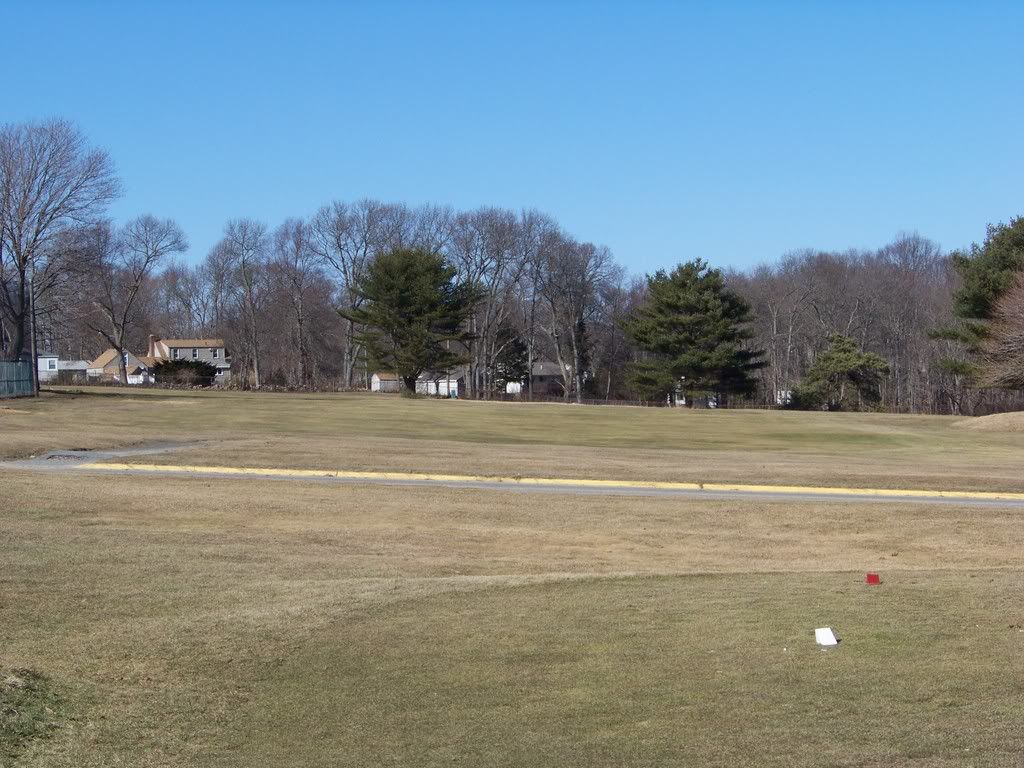
Shennecossett opens with a shortish par 4 calling for a drive across Plant St. Be wary of cars crossing in front of you. The landing area is fairly forgiving.
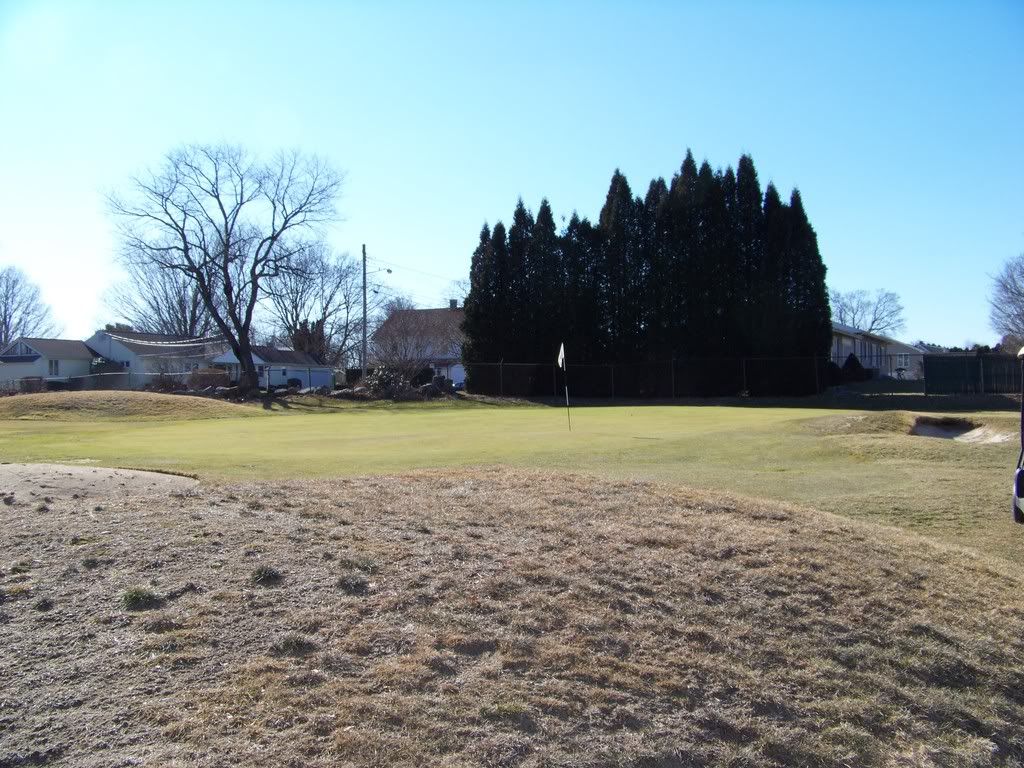
The hole turns left up a hill to a fairly large green. This picture was taken from the top of the mound above a bunker short of the green that obscures the bottom quarter of the flagstick. That little coffin-bunker is pretty nasty.
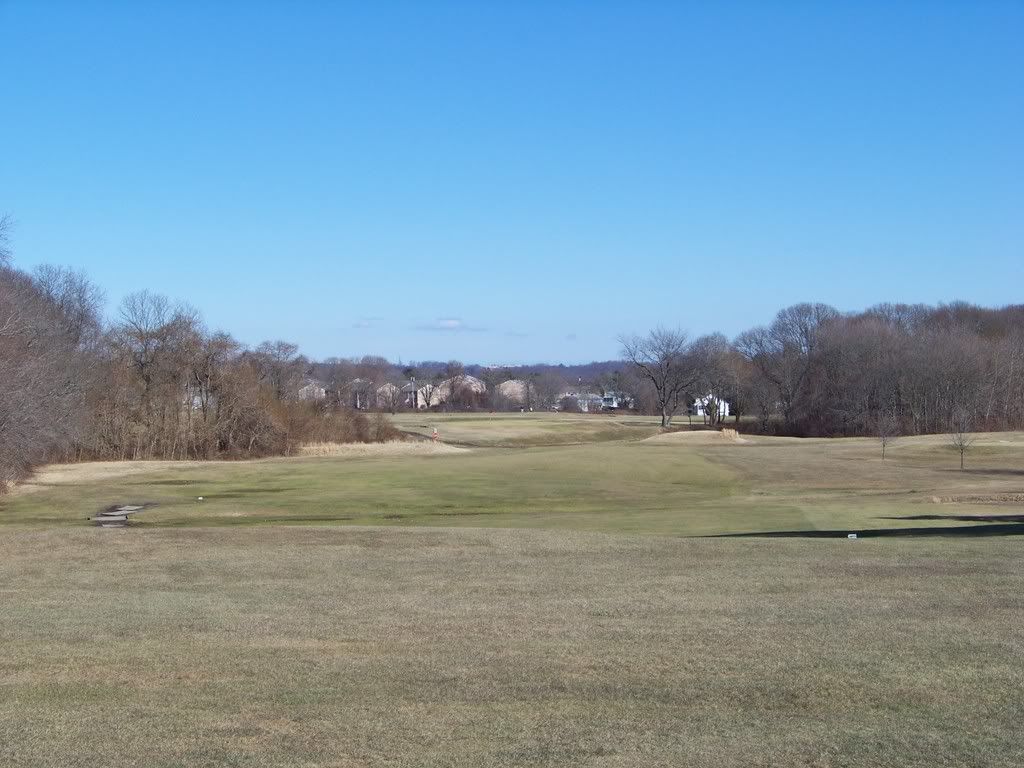
Number 2 heads downhill to another plain-jane landing area. Take care not to stray left, as you can be robbed of a good view of the green (or out-of-bounds, if you're left enough).
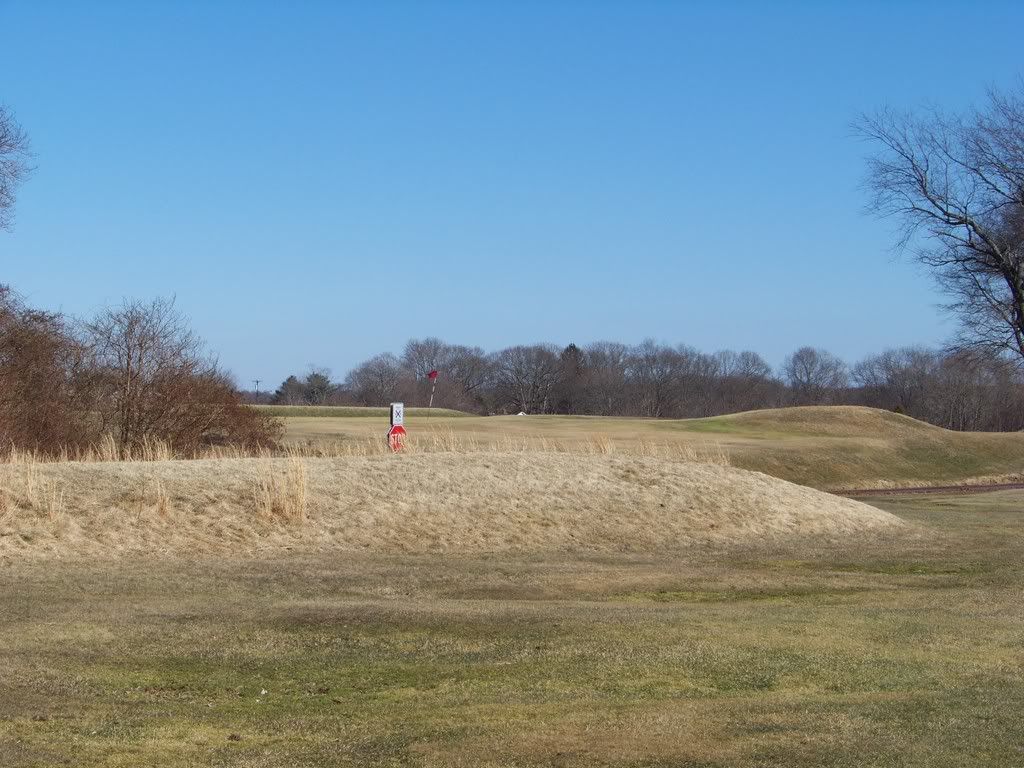
View from the left rough. The approach comes over train tracks and uphill to a broad green flanked by bunkers that will catch an un-mindfully hit shot that skips over (for the golf course plays quite firm).
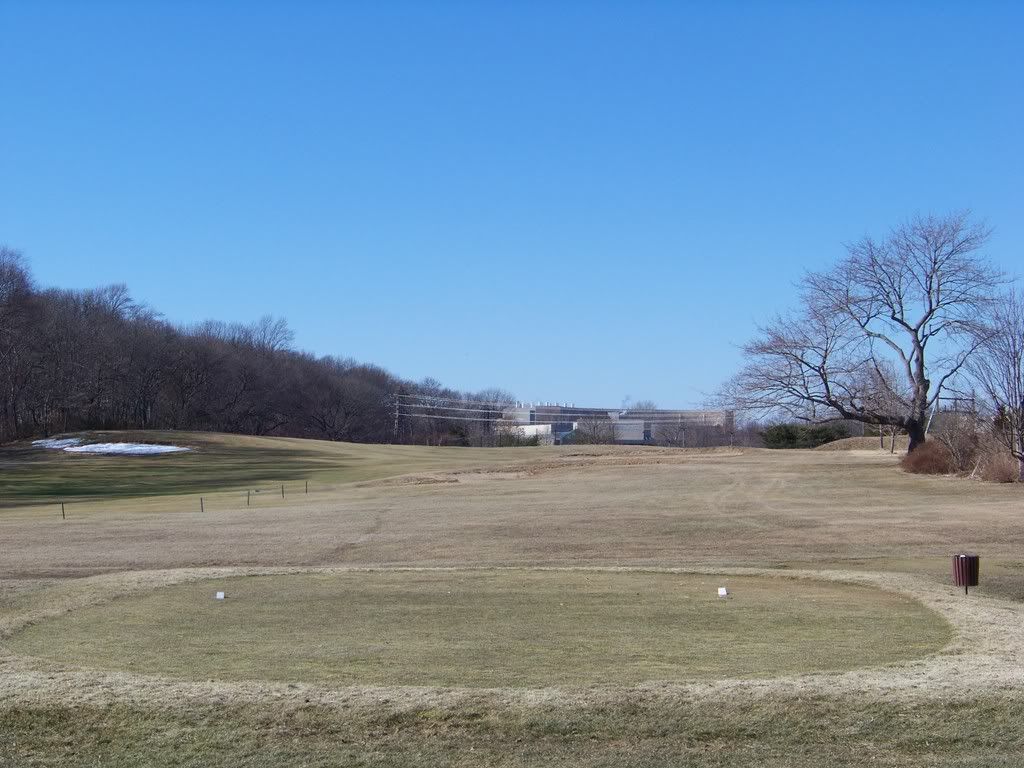
The tee shot on number 3, another par four. It plays over a rise and...
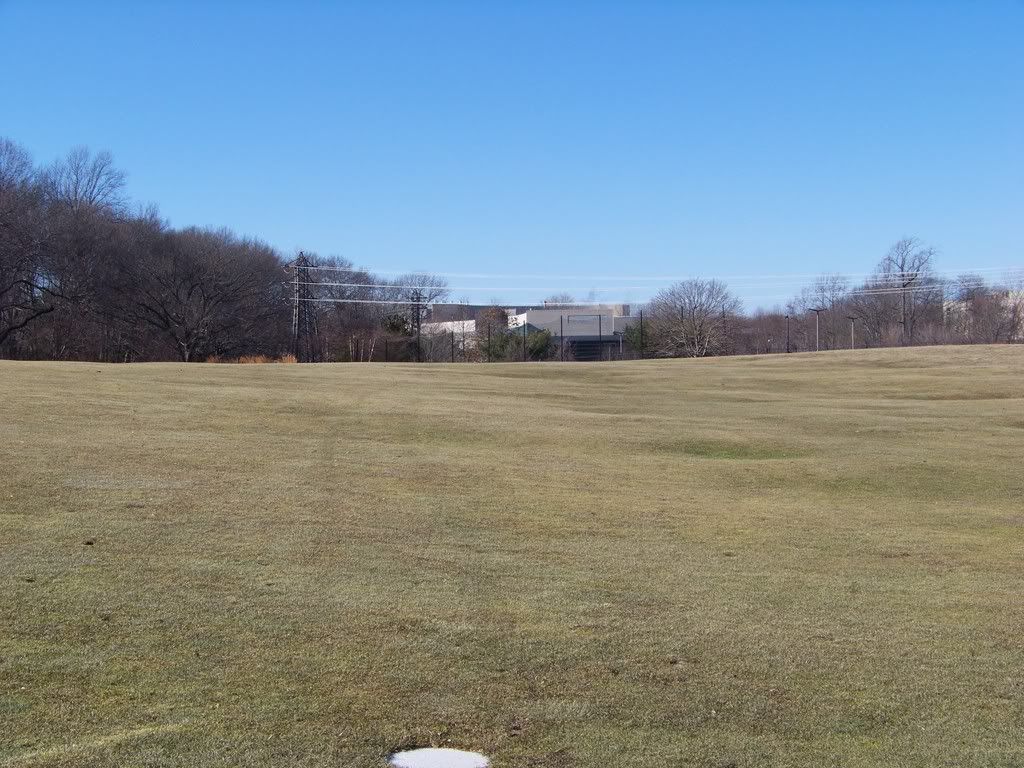
...the approach is mostly blind. The green is small and relatively flat, unguarded by much trouble other than OB over the back.
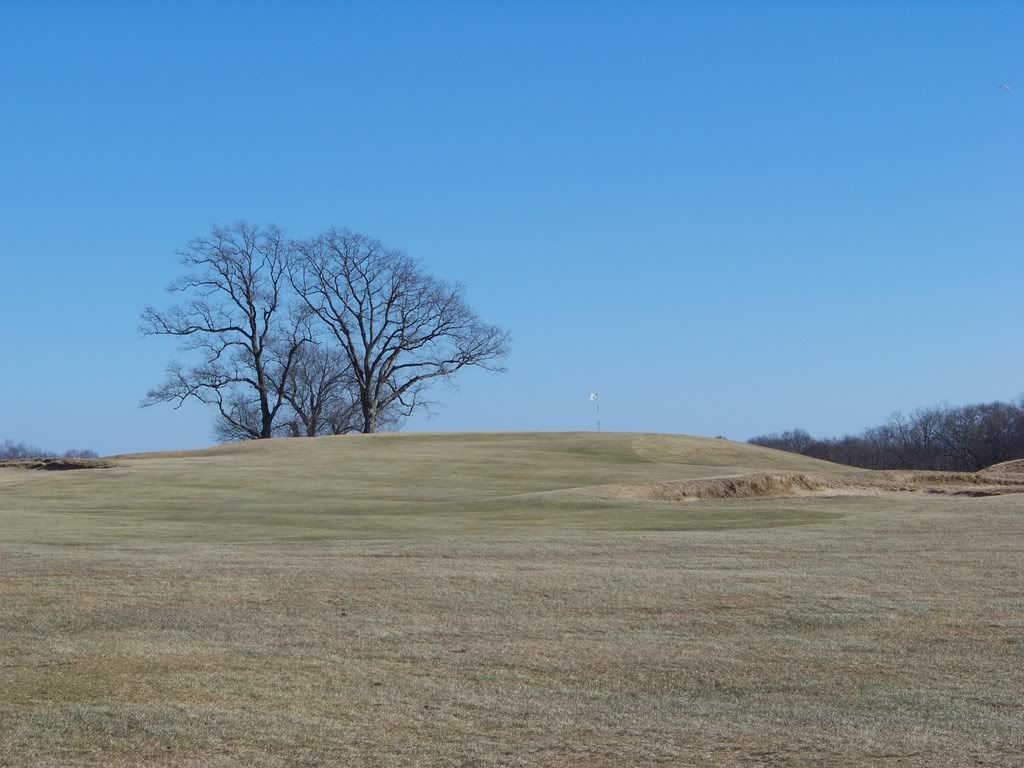
In my opinion, the toughest par on the golf course comes at the fourth, an approximately 195 yard hole from the tips, which I have never played because most tee boxes are closed in the winter. Even from 170, the green is about as elusive as I've ever seen.

This is what greets the player who misses to the left: a semi-blind pitch up to the green.
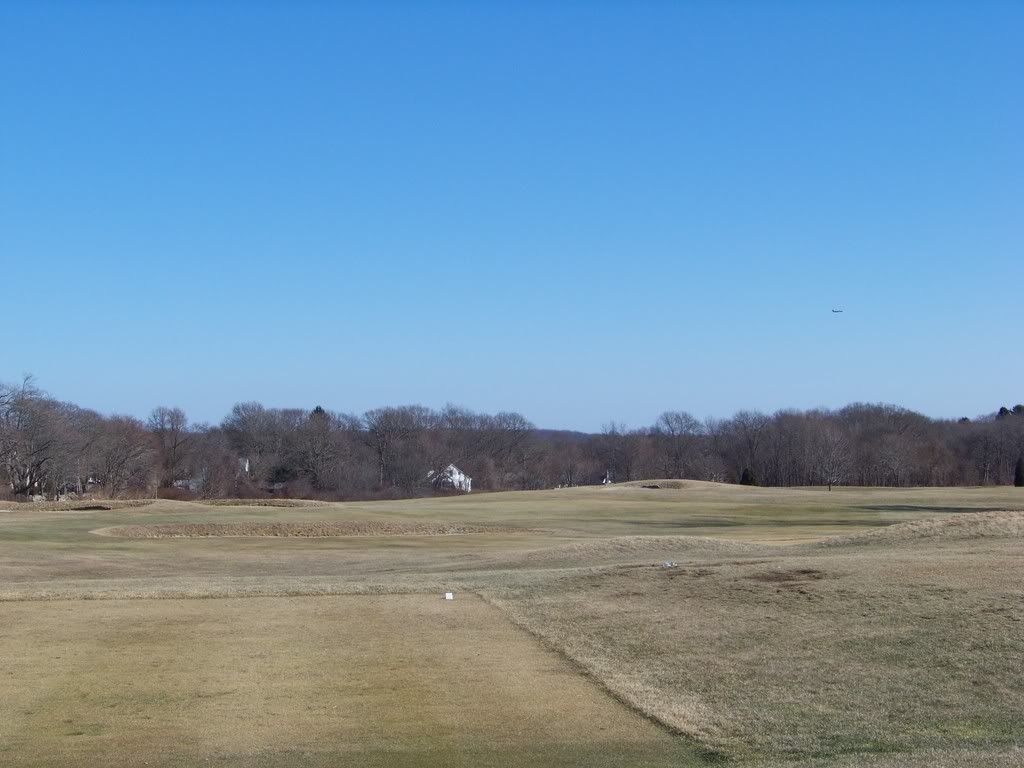
Number 5 is a lengthy par 5. If it's width you want, it's width you've got! The preferred drive races down the right, challenging a fairway bunker.
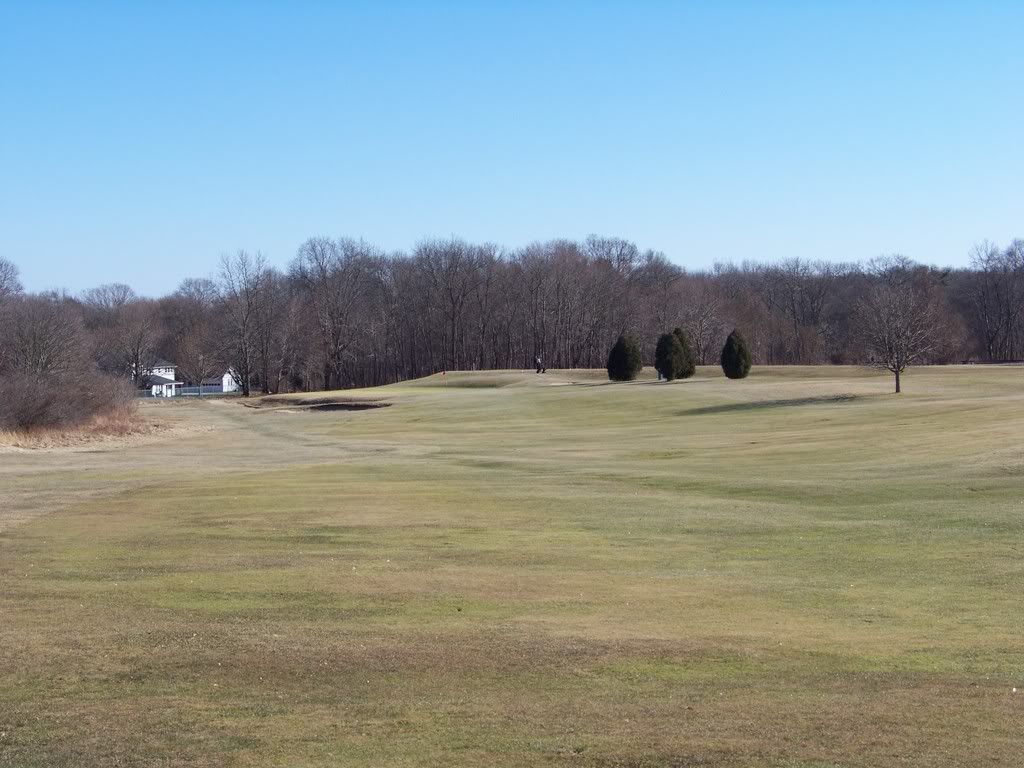
Bust one down the left and you're faced with this view. A stinger aimed just right will curl down towards the green. Don't mess with those little evergreens, though.

This shot from about 60 yards short of the green. Brilliant, subtle contours make this shot very difficult, whether the player wishes to employ a 6 iron or a sand wedge to a green that slopes gently away.
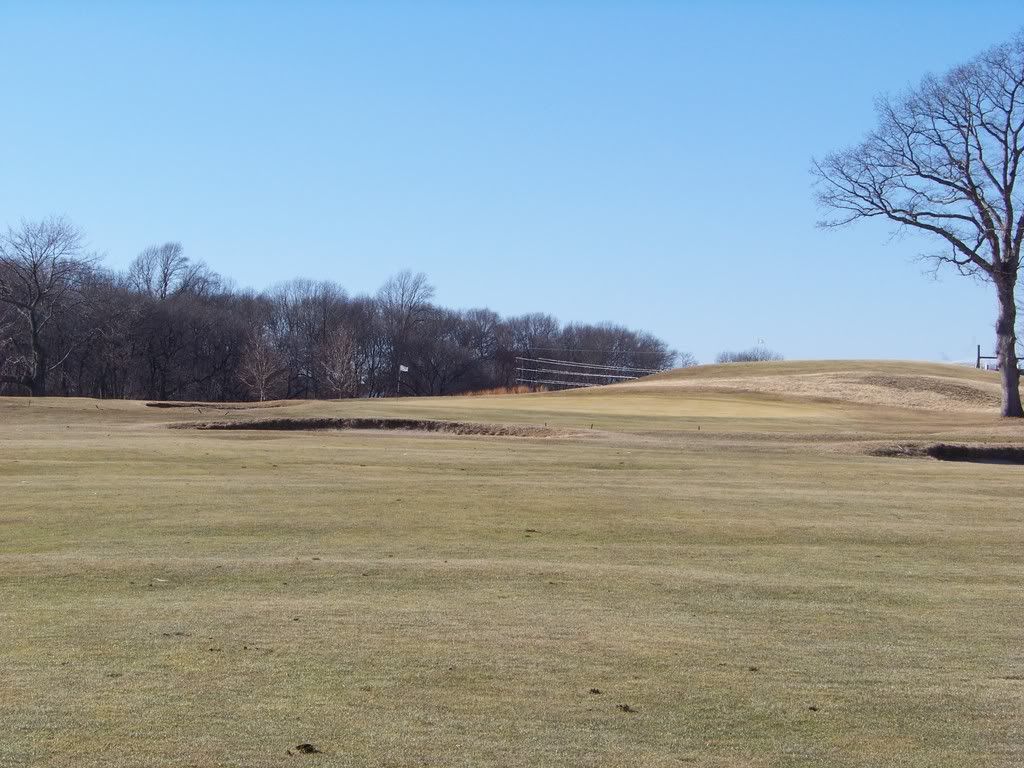
The approach to the straightaway, uphill, lengthy (about 430 from the tips) par 4 6th. The green is challenging, but built with a long iron approach in mind.

Hole 7 returns down the hill that number 6 climbed. Though it is about the same distance as the previous hole, it plays a good 50 yards shorter.
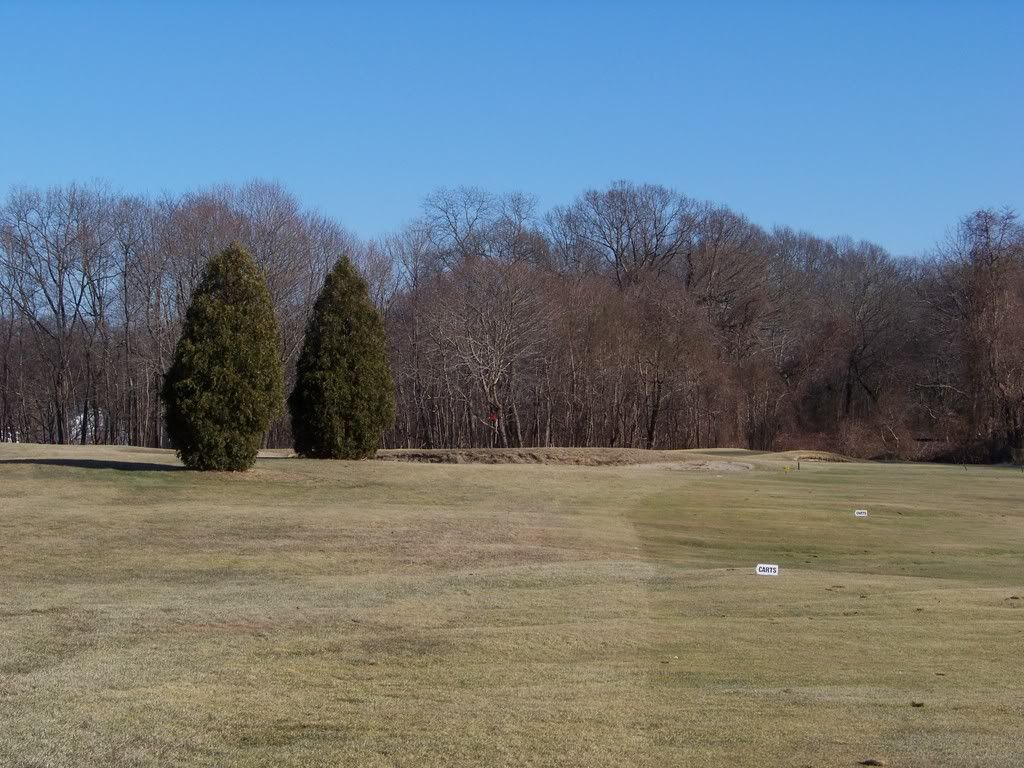
Naturally, the green at 7 is better guarded than that at 6. A fronting bunker once again obscures the front of the green and bottom of the pin.
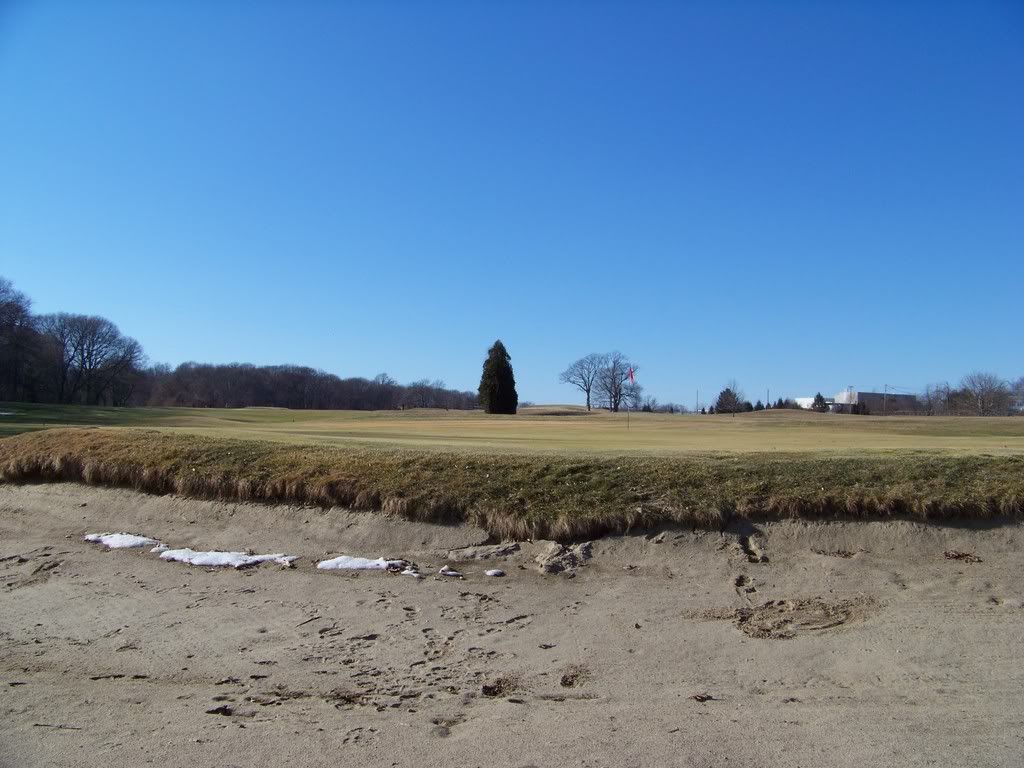
The green runs away from the player, giving this bunker a lot of business.

The 8th, a short par 5, heads uphill before leveling off, ambling slightly right...
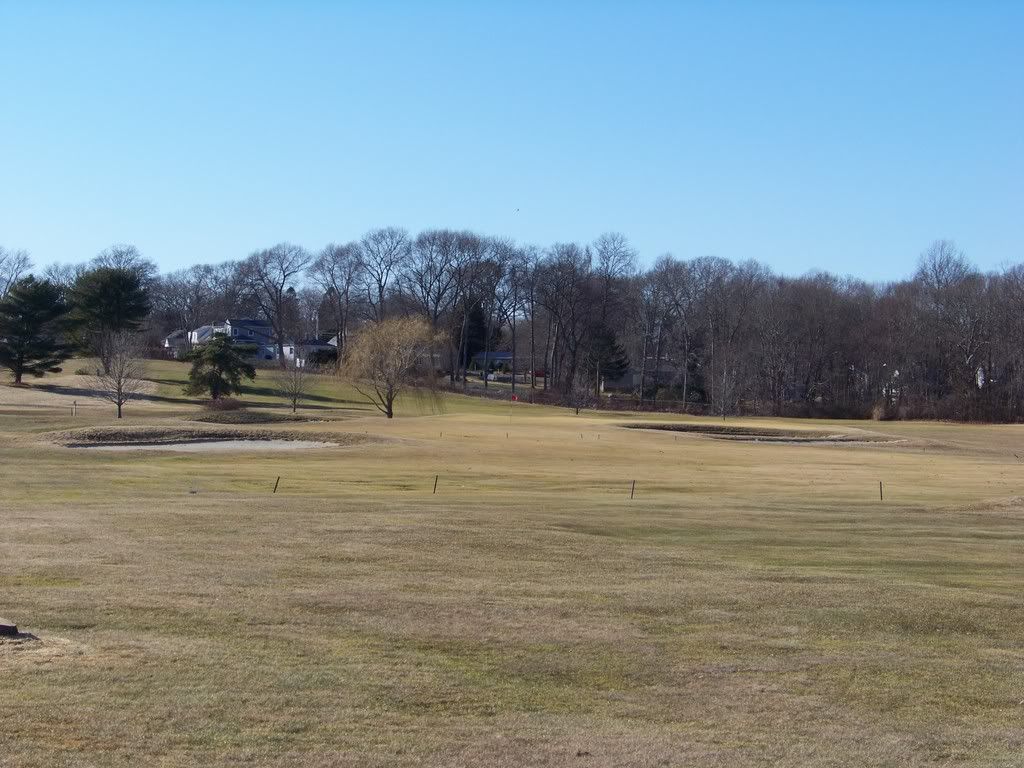
...and leaving this view from the left side of the fairway.
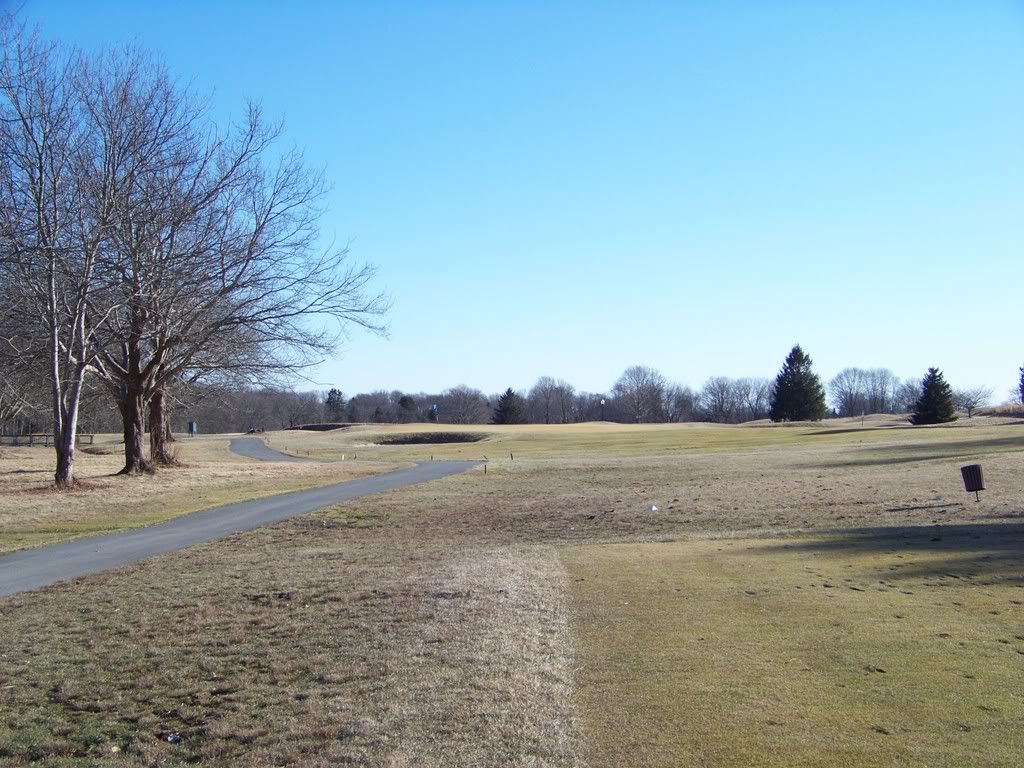
The 9th is a mid-length par 3 that is Redan-like. It's a good chance for a birdie heading to the back side.
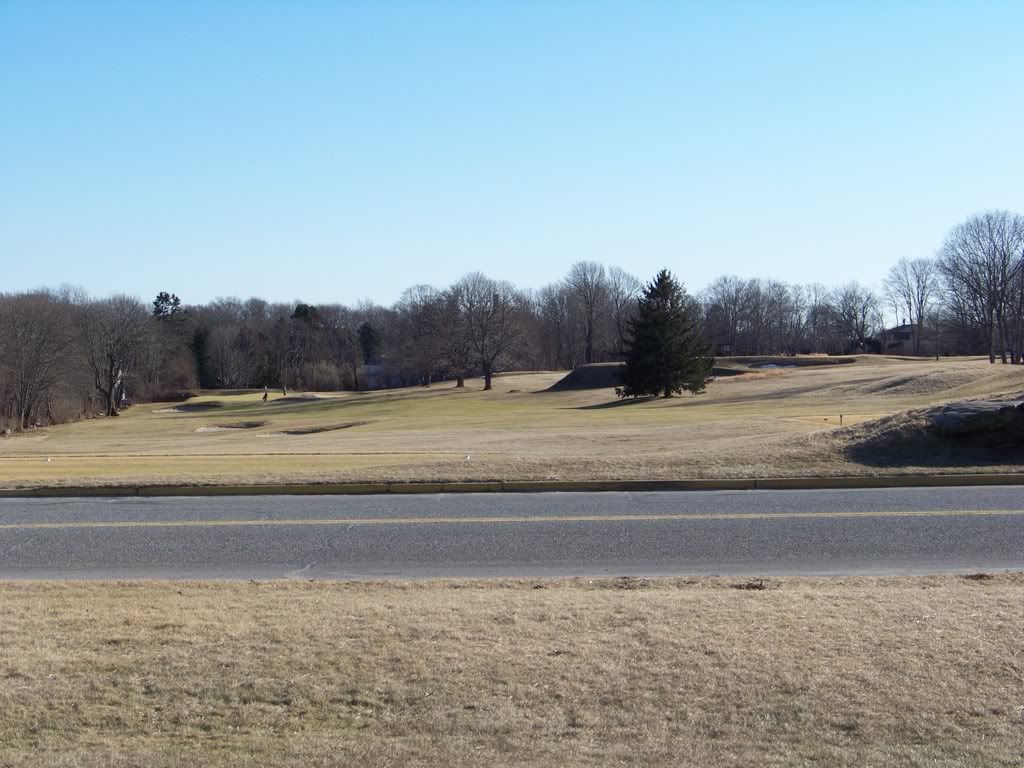
Number 10 is one of my favorite holes on the golf course. Once again, those who risk the peril of the left bunkers are compensated with a better view of a very tricky green.

The view from the ideal position off the tee. Hit for the center of the green and you may be spared.
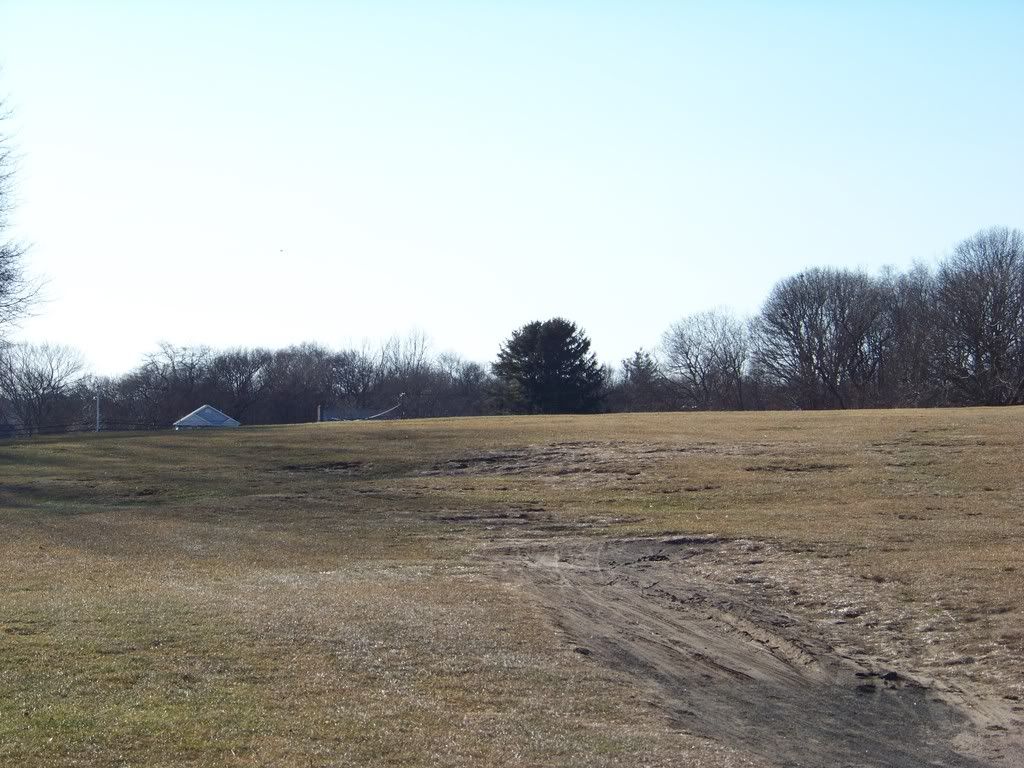
A semi-blind tee shot greets the player at the short par 4 11th. There is lots and lots of room in the landing area, but the leftmost third of it is the promised land; from most anywhere else, the right greenside bunker will be troublesome...
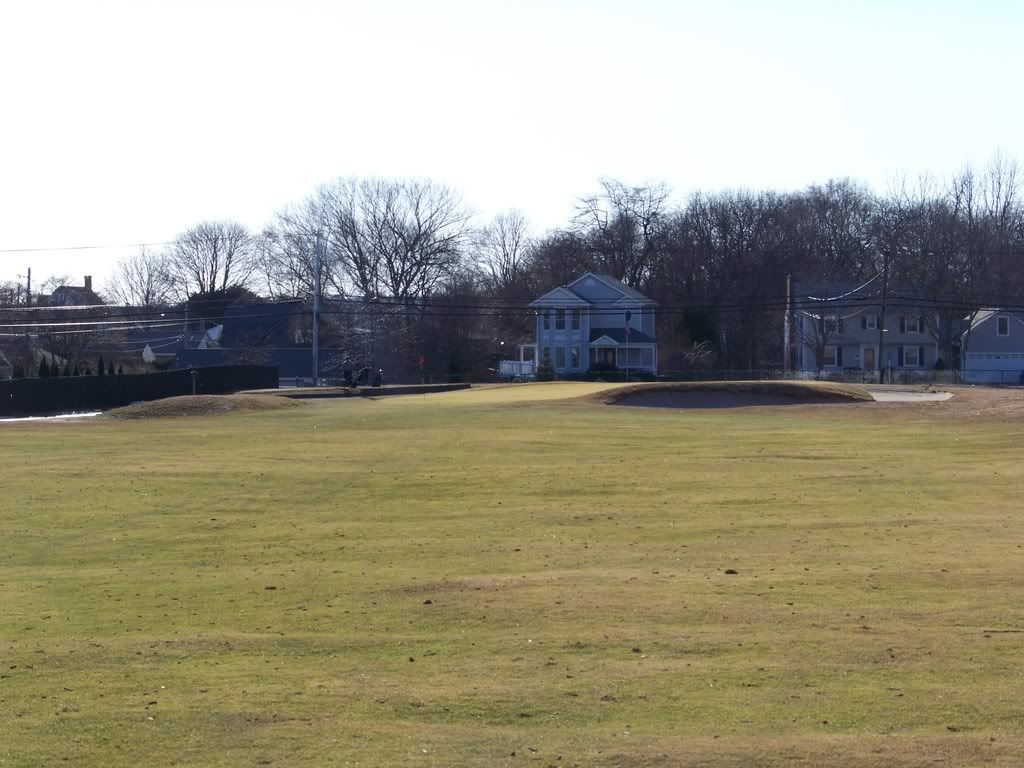
...as can be seen here.
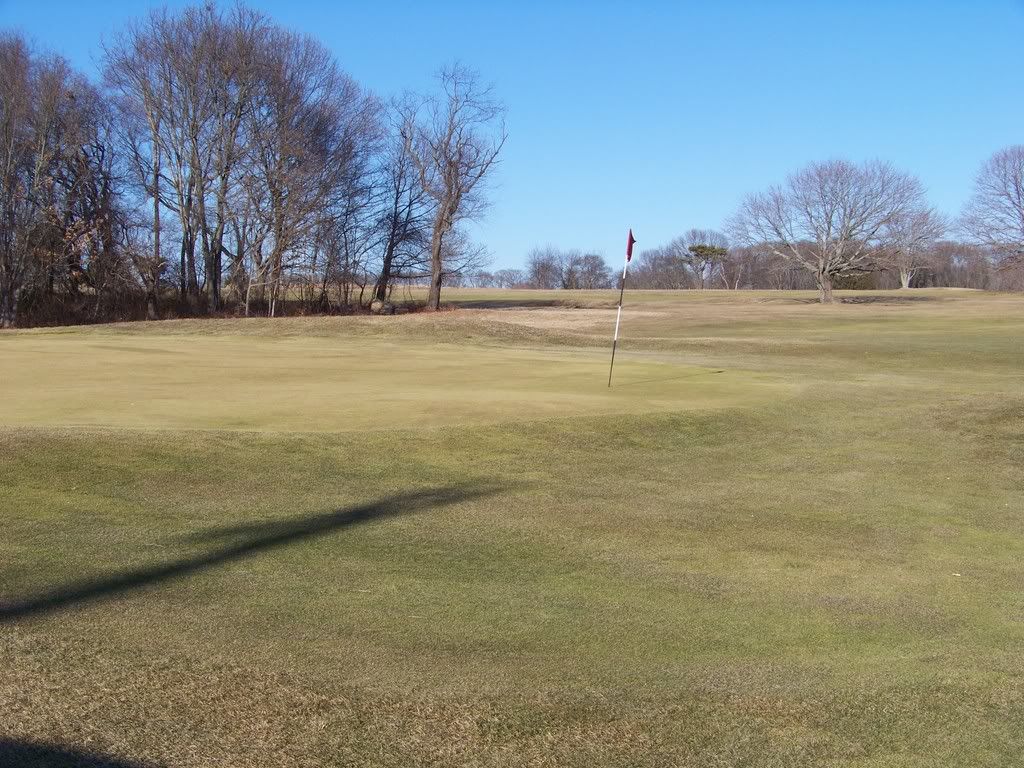
This little chipping area will catch many overly aggressive shots to a front pin...
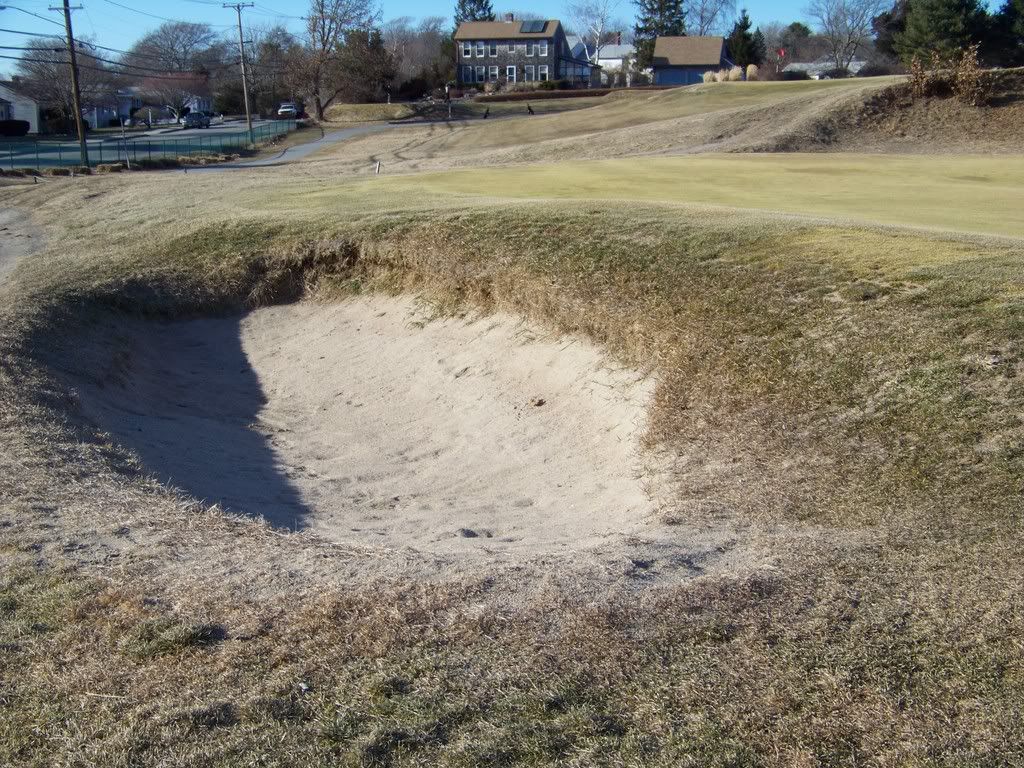
...and this grave is dug for such shots that miss the center of the green.
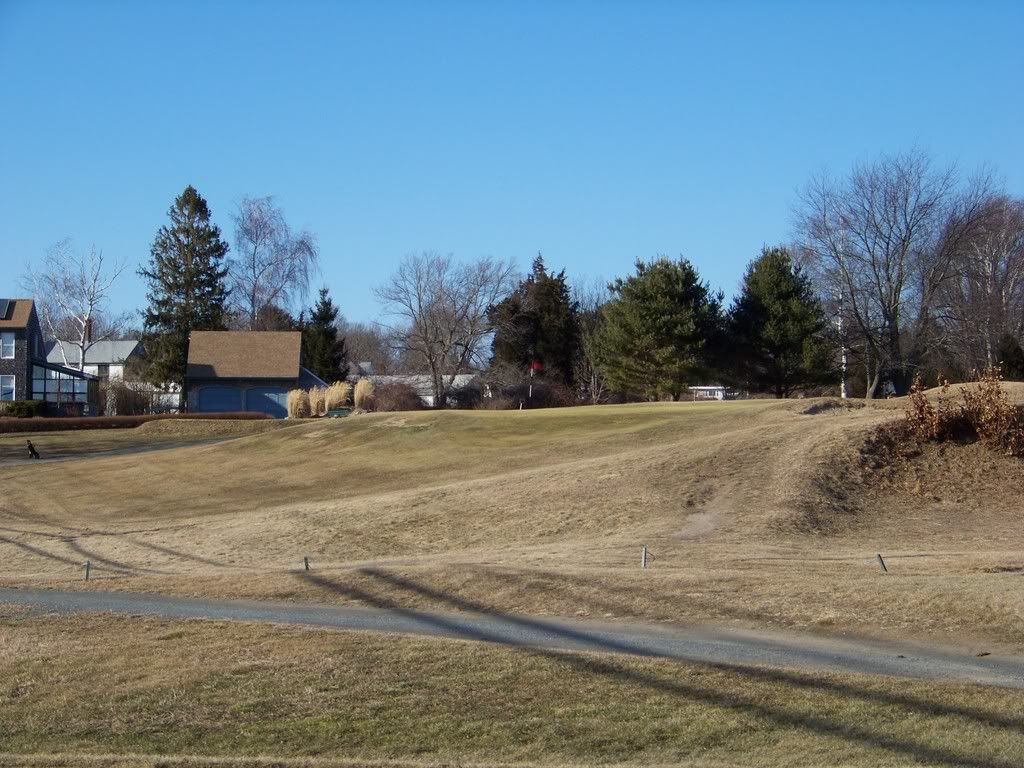
The 12th is a beguiling sub-130 yard par 3. Obviously, do not miss left...
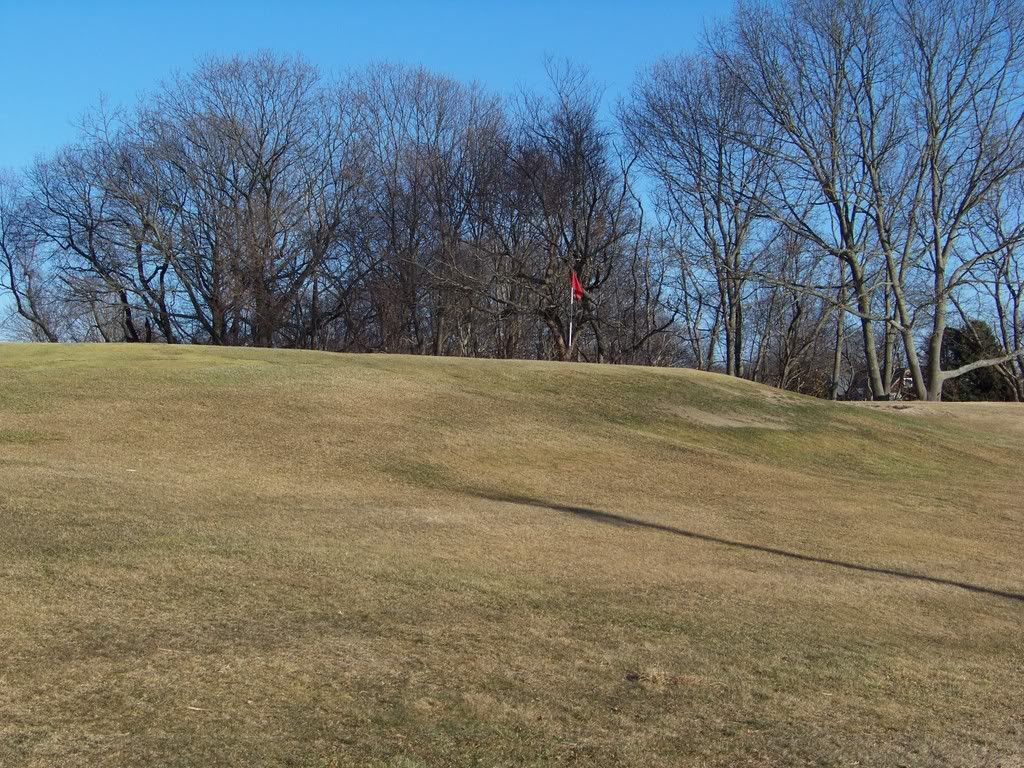
...unless you'd like to play from down here (you don't want to play from down there).
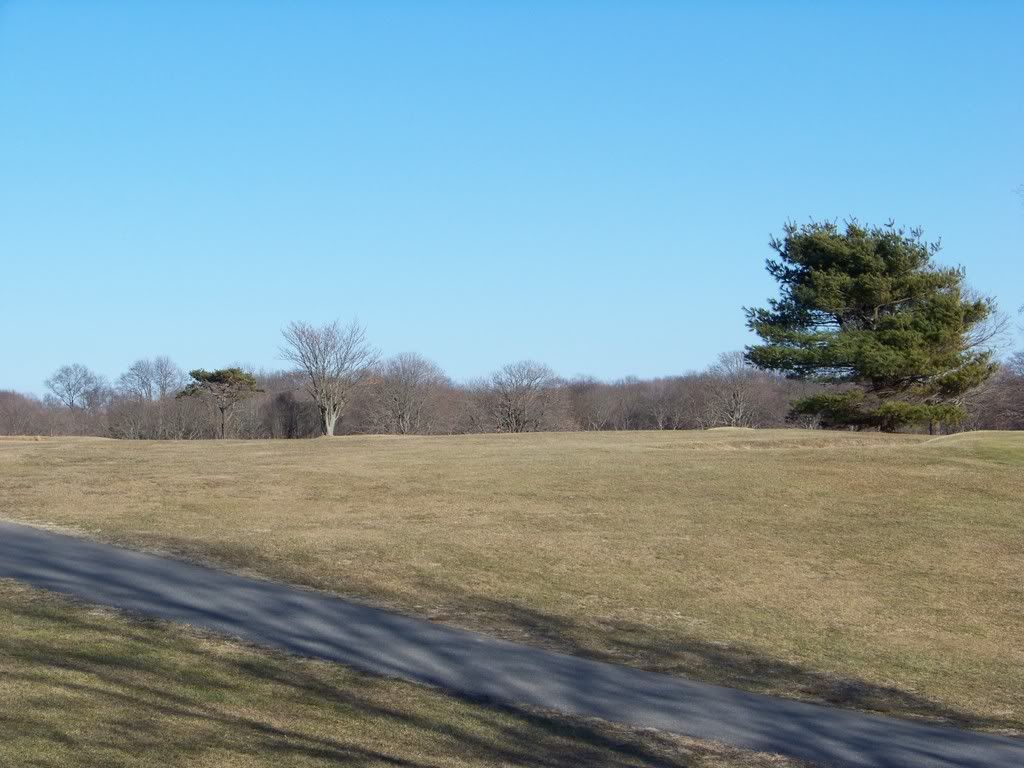
Another fairly short par 4, number 13 is best played down the left.
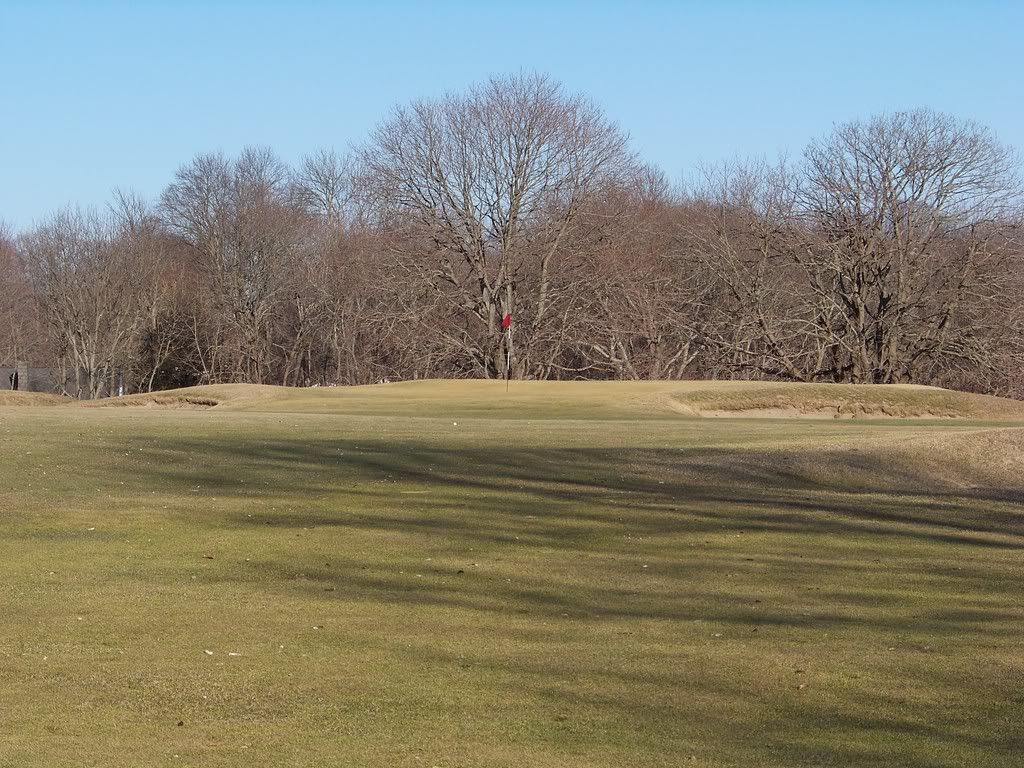
Severe dropoffs and/or bunkers left, short-right, and long dictate one thing: hit the green or pay dearly.
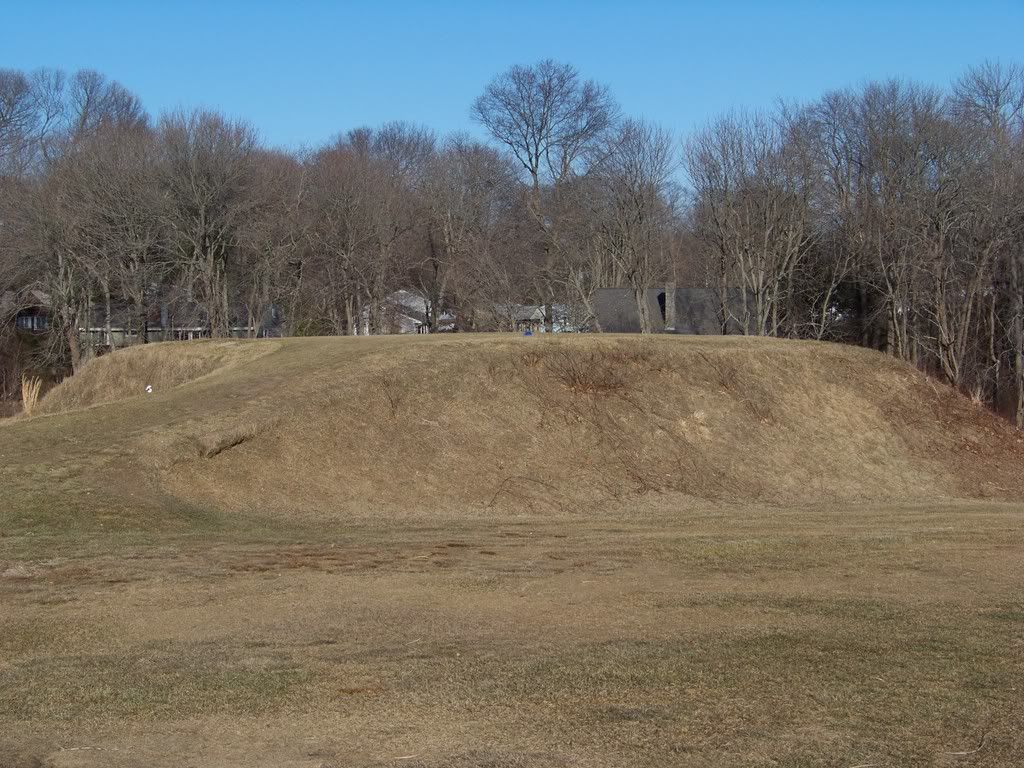
The noticeably built-up back tee on 14 makes no attempt to look natural. I like it, though.
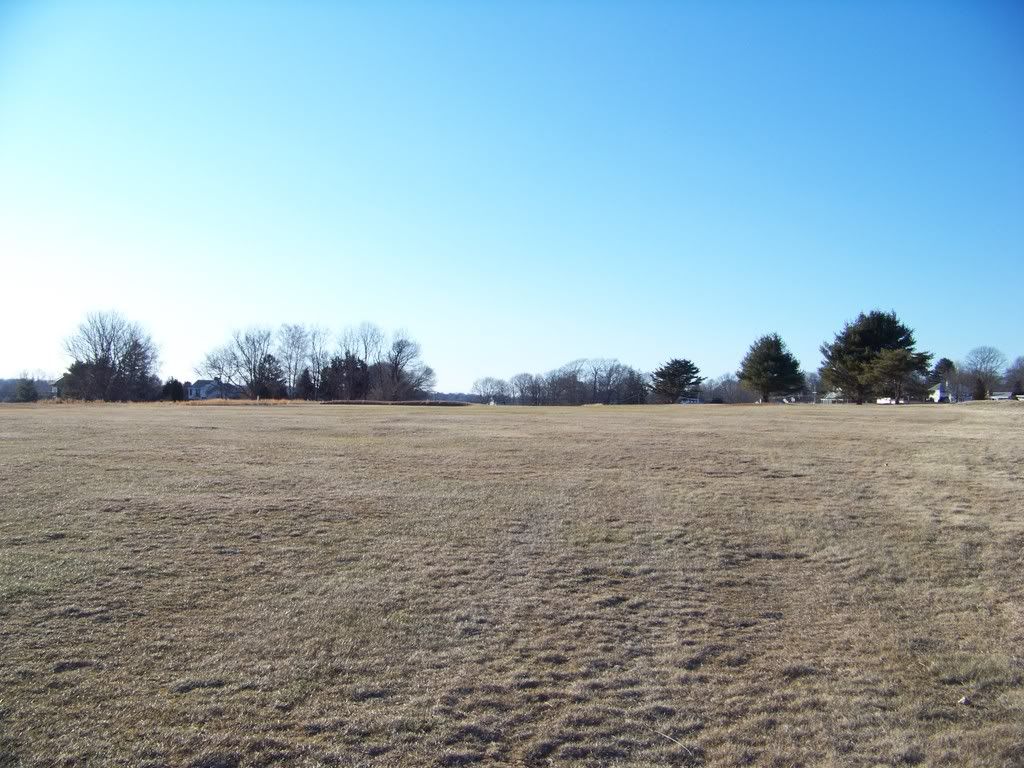
The view from in front of the tee box. Another semi-blind shot that must avoid the left fairway bunker.
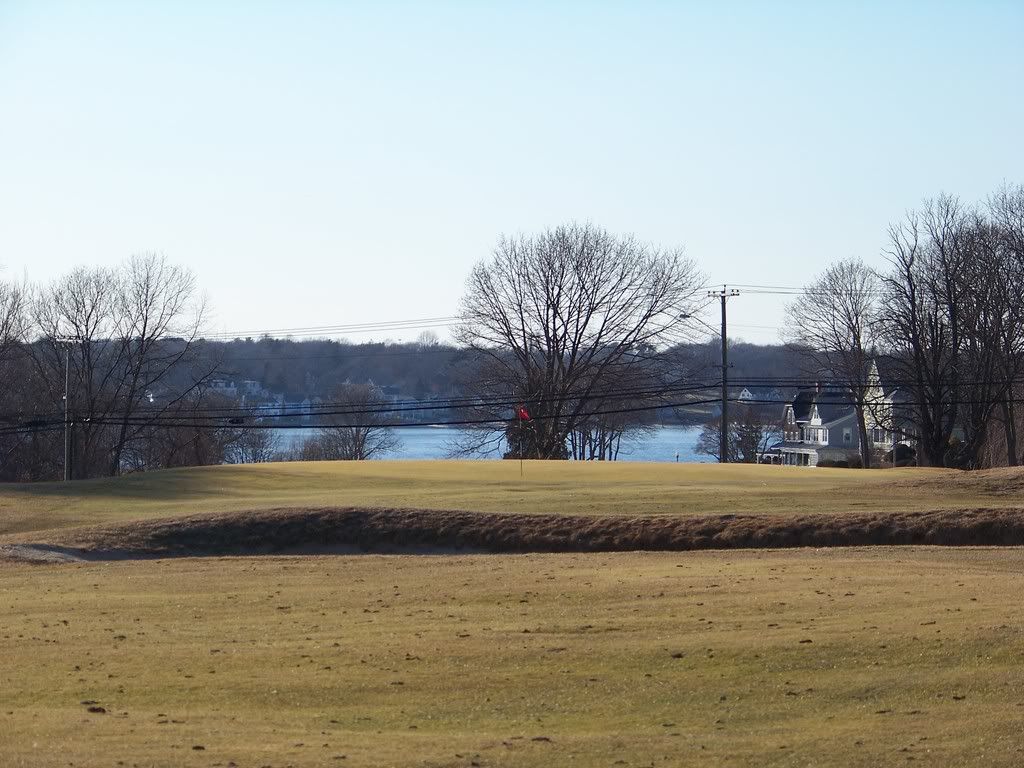
The first glimpse of the Thames (pronounced phonetically in this case)! A longish iron to a green that will accept a running shot, so long that it is played with care.
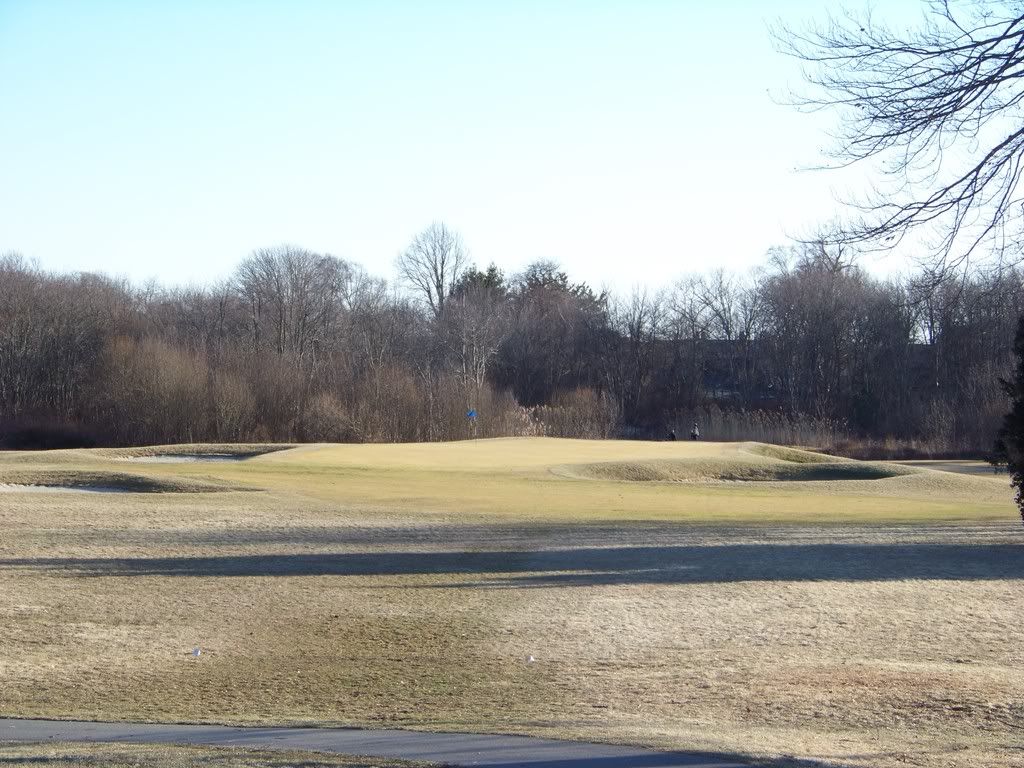
Hole 15 is the first of three that were built when the golf course purchased this scenic parcel of land across the road in exchange from the land on which the original other three holes lay (I believe). This is a mid-length par 3 guarded by bunkers. Not all-world, but not too shabby.

Number 16, a par 4, is the most photographed hole at Shennecossett. Do not stray into the left bunkers off the uniquely situated tee box.
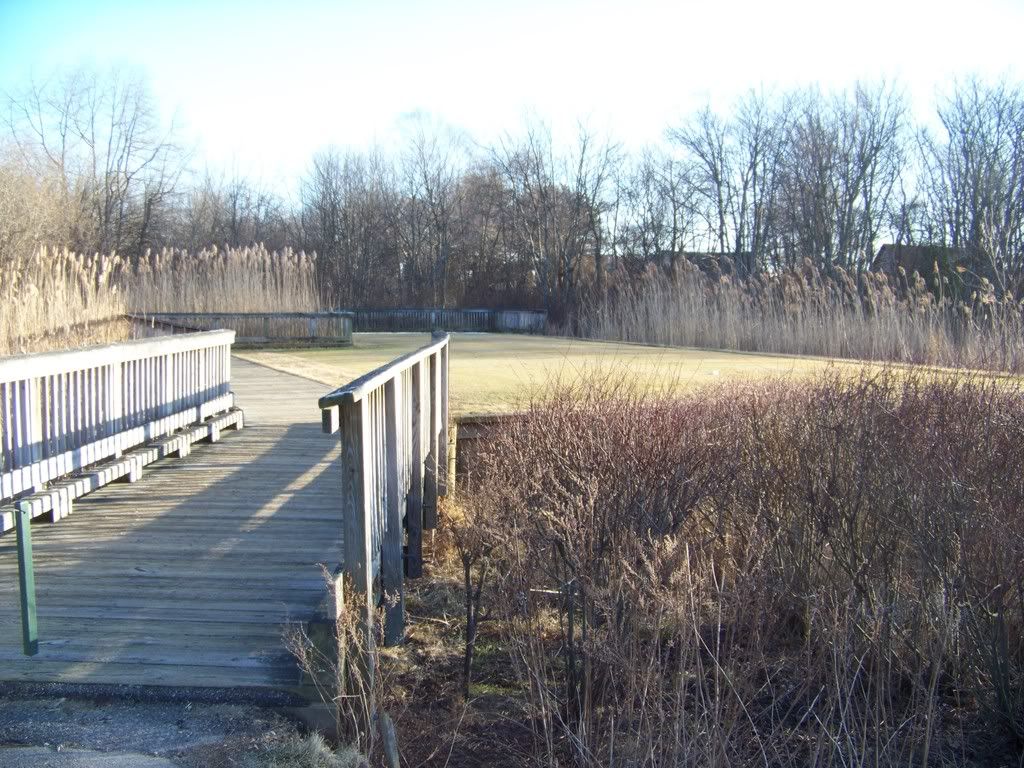
Again, not terribly natural, but interesting.
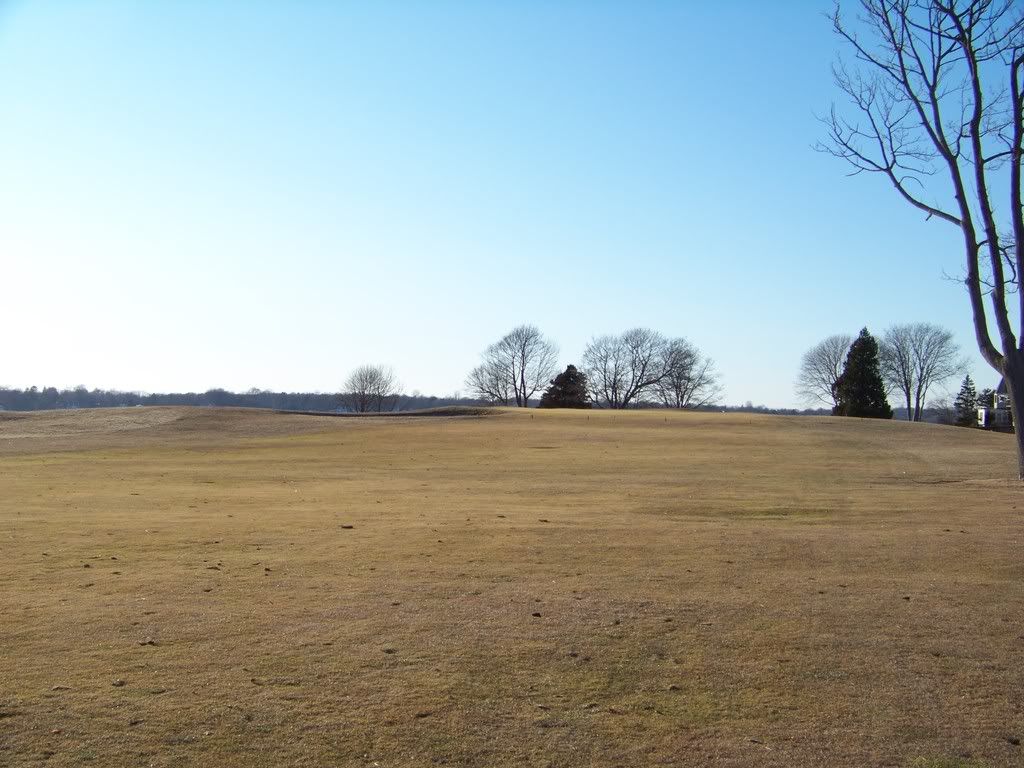
The approach to the green. A skyline effect created from the conversion of the rear trees to cabinets and floors would be welcome.
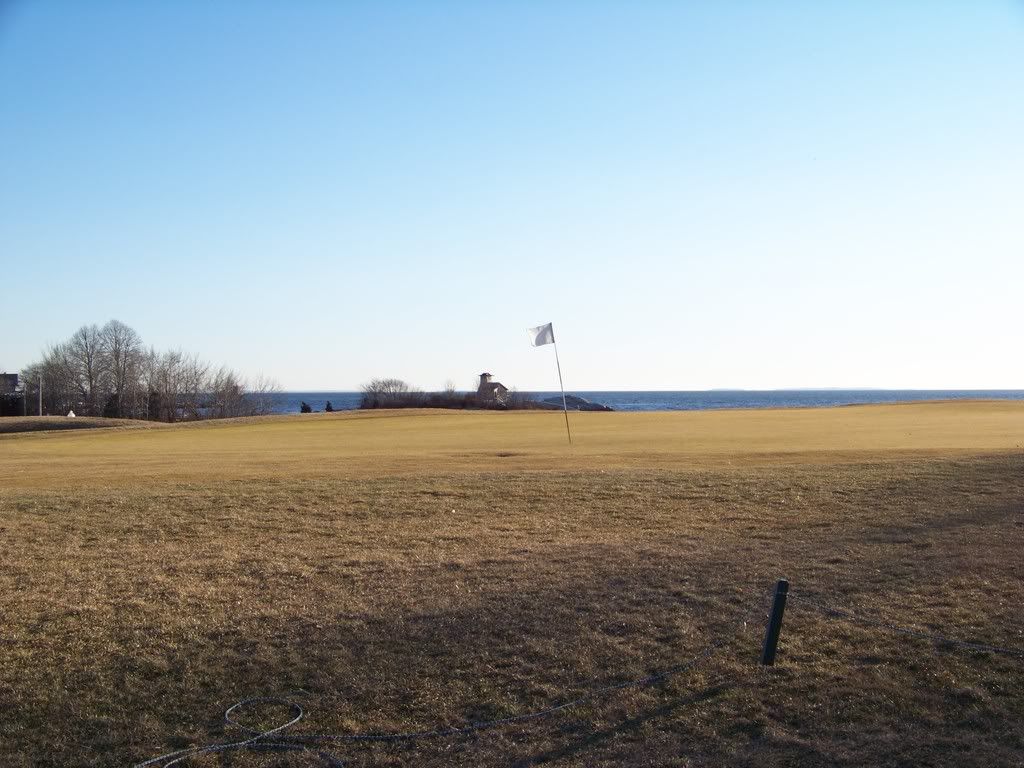
The so-called "money shot"...
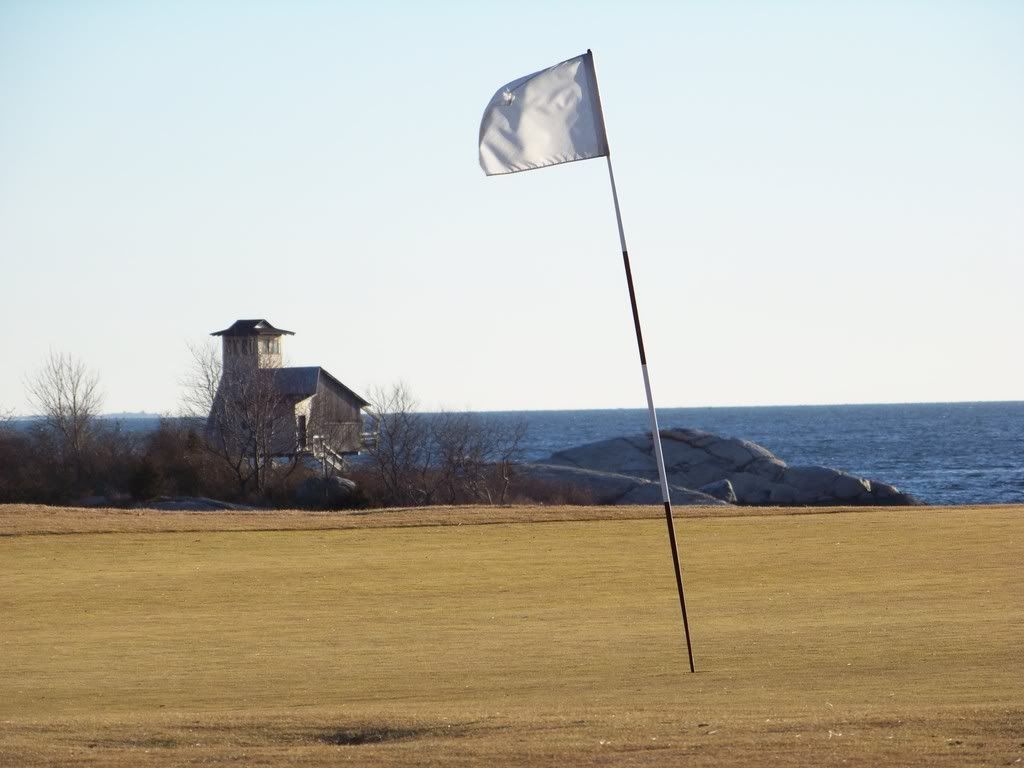
...and a closer-up one.
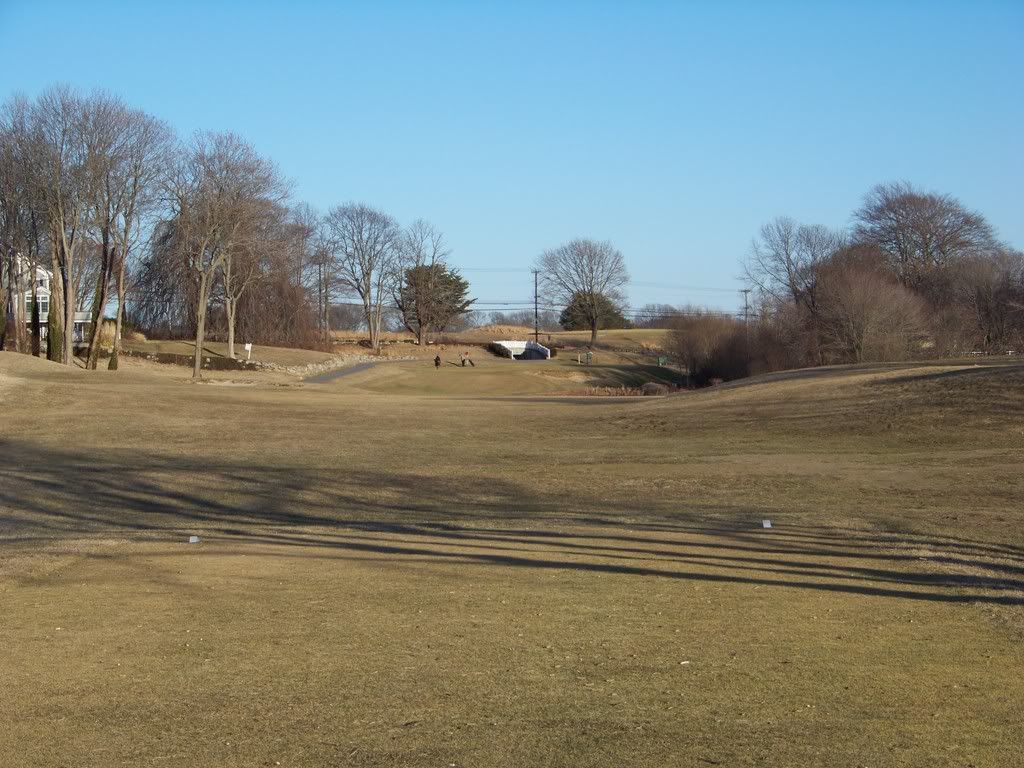
Shennecossett's penultimate hole is another short par 4 where a long iron or lofted wood is the prudent play off the tee. Tee shots hit too far or too far right may find a wetland hazard...
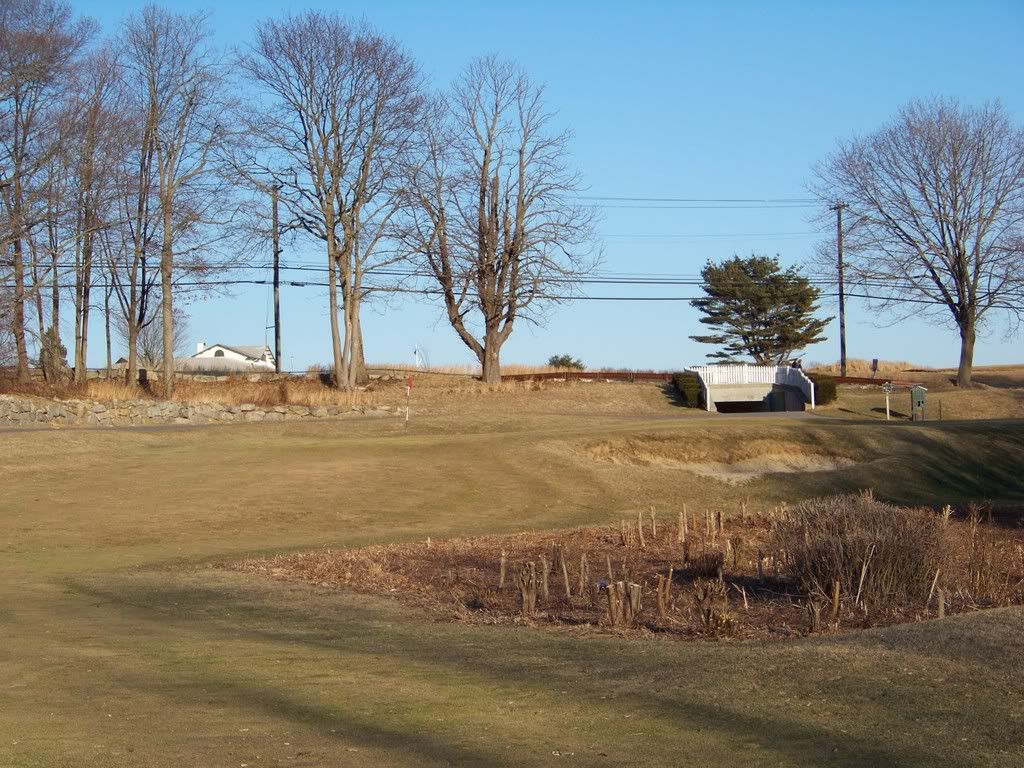
...seen here. An uphill wedge to a firm will test late-round resolve.

The closing hole is a reachable par 5. Blast one down the right side and you'll probably have a blindish wood to the green. If played in three shots...
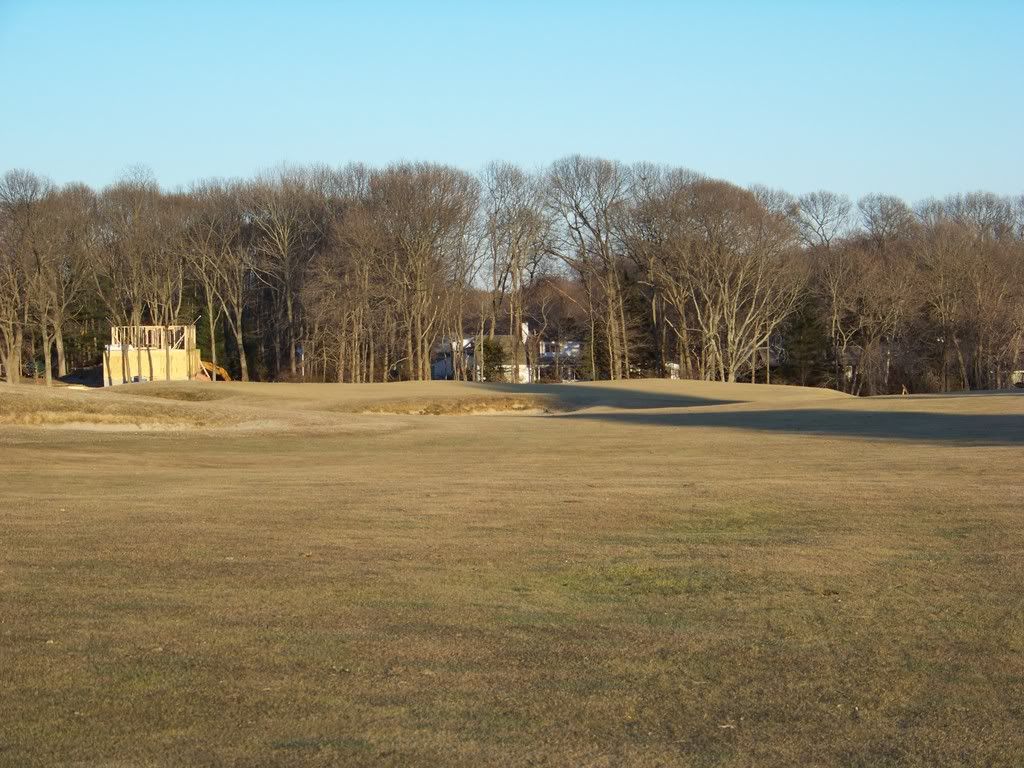
...this will be the view for the approach. The green is shallow and elusive; whatever fails to find it will likely find one of five greenside bunkers.
Shennecossett is a really neat old golf course that should be higher on the list of public golf options in CT. If you don't have fun there, you ought to consider another game than golf.
Cheers; let me know of questions/comments.
--Tim